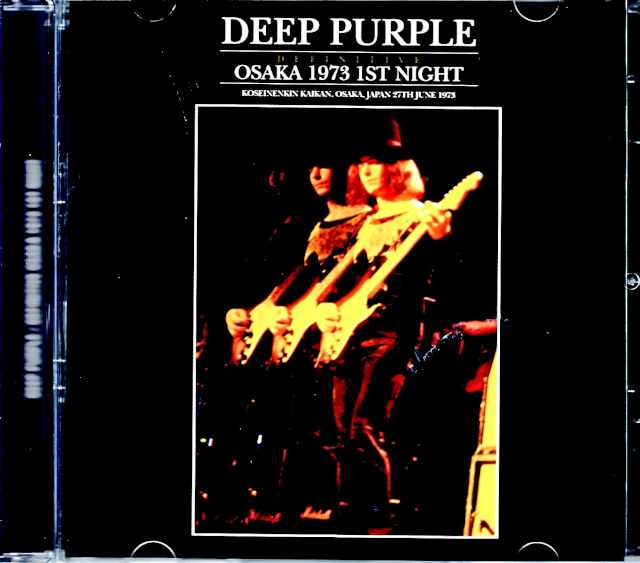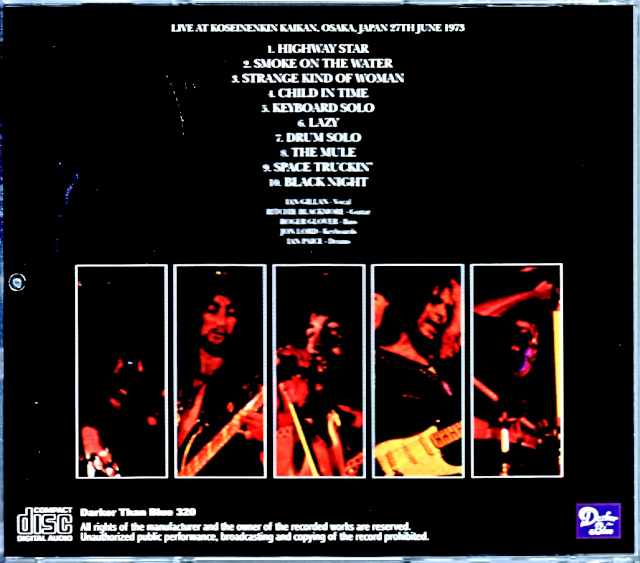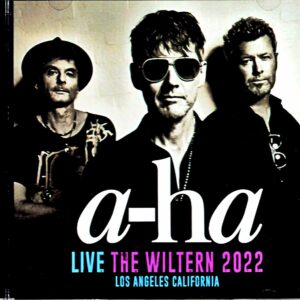Description
Just on the eve of collapse. The legendary recording that conveys the last glittering 1973 visit to Japan has been significantly upgraded. The supreme sound by “former master & GRAF ZEPPELIN” is now available. This work is engraved with the “June 27, 1973: Osaka Welfare Pension Hall” performance. It is the best audience recording. Speaking of the 1973 visit to Japan, there are many incident concerts such as the Nippon Budokan riot and the final performance of the II period. Naturally, our shop has archived the supreme press name group. The whole view of the world tour will be handed over to the commentary of “DEFINITIVE GENOVA 1973” which will be released at the same time, so let’s check the position of this work while organizing the too historic visit to Japan collection.・June 23rd “DEFINITIVE HIROSHIMA 1973” ・June 24th “DEFINITIVE NAGOYA 1973” ・June 25th “DEFINITIVE BUDOKAN 1973” “BUDOKAN 1973 ORIGINAL MASTER” × June 26th: Nippon Budokan (cancelled) ・June 27th: Osaka Welfare Pension Hall ←★This work★ ・June 29th “DEFINITIVE “THE END”” *Note: The above is only the representative work. That’s a total of 5 performances. The big riot was on “June 25th” and the last gig was on “June 29th”. The first day in Osaka, when this work was recorded, was a concert in between. Also, on “June 25th”, a riot occurred because there was no encore, and on “June 29th”, Gillan gave a legendary speech instead of an encore. In other words, this work was also “the last full show in which the second DEEP PURPLE responded to the encore”. Traditional recording revived to the “almost something else” class Such a legendary night has long been known for its famous recordings, and “FINAL BLACK” has been loved as a standard in our shop. This work is also the same standard recording, but it is a masterpiece that goes back to the original master and is further finished with the detailed mastering of “GRAF ZEPPELIN”. And the sound is “almost something else”. Recently, we have introduced many “GRAF ZEPPELIN” masterings in our shop, but the method is “natural reproductionism”. Rather than processing with flashiness to compete with modern rock, the main goal is to “restore the on-site sound”. Therefore, if the original condition is very good, it will not change much, and conversely, there are cases where it will be a big change. And this work is also a sample of “big change”. Compared to “FINAL BLACK”, its strength, vividness, directness, naturalness, stability … everything is greatly superior. The biggest thing is the sense of stability. To begin with, this recording has been known for being difficult to listen to because the sound image and balance change erratically, but it is very stable. The reason for this is the monauralization. This is a common pattern in audience recordings from the 1970s, but this recording was originally a monaural recording and was recorded on stereo tape. Over time, such tapes tend to deteriorate differently between the left and right channels, and the phase is also easily shifted by dubbing and digitization. In some recordings, this can give the recording a “tape-like flavor,” but this recording was different. The left and right channels were so distorted that it felt as if the recording itself was bad. This work brings out the “true sound” that no one knew about. This work is precisely corrected. Phase correction is applied that does not allow for a deviation of even 1/1000 seconds, and then it is made completely monaural. This corrects the disturbances that occurred on the left and right sides, highlighting the original beauty of the recording. In fact, in “FINAL BLACK,” this disturbance was judged to be “bad sound” and was corrected by equalization. Although it was certainly easier to listen to than the original sound, the increase was small because the root cause was not corrected, and the performance sound also felt processed. However, this work treats the root cause, so it is a significant upgrade that combines a natural feeling with ease of listening. Moreover, this monauralization has significantly reduced hiss noise without reduction. Of course, other processing such as pitch correction, band analysis, balance adjustment, and noise processing have also been properly performed in this work, and it is not a “universal prescription” that will improve any recording by converting it to mono. However, it was also a tremendous miracle cure for this recording. The diagnostic ability to see through it and the ability to apply the treatment appropriately. That is the true value of “GRAF ZEPPELIN”. Originally, I should have talked about the last encore of the second period, “Black Night,” and the PA trouble at the start of the show (Gillan was off and it was in a karaoke state), but the upgraded sound is so good that I forgot about it. Perhaps those who are familiar with the already released group will think that this work is a new excavation of another recording. I never thought that such a good sound was hidden in that traditional recording… I don’t remember an album that showed such power even in the many “GRAF ZEPPELIN” masterings. The best audience recording of the performance “June 27, 1973: Osaka Welfare Pension Hall”. This is a masterpiece that “GRAF ZEPPELIN” finished with meticulous mastering of the original master of the traditional standard recording. The sound is “almost something else”. The sound that was previously released and difficult to hear is now stable, and the strength, vividness, directness, and naturalness… are all greatly superior. This is an amazing upgrade that brings out the true value of the “real great recording” (Remaster Memo). After phase correction and left and right band correction, it has been remixed into a mono sound with excellent stability (*originally a mono recording)! Furthermore, the minimum necessary processing such as pitch and band adjustment has been done without going overboard, and the difference from the previous release is clear. Live at Koseinenkin Kaikan, Osaka, Japan 27th June 1973 TRULY PERFECT SOUND(UPGRADE) (79:17) 1. Highway Star *Due to a PA malfunction on the day, vocals were restored around 1:18 2. Smoke On The Water 3. Strange Kind Of Woman 4. Child In Time 5. Keyboard Solo 6. Lazy 7. Drum Solo 8. The Mule 9. Space Truckin’ 10. Black Night *Final encore of Period II Ian Gillan – Vocals Ritchie Blackmore – Guitar Roger Glover – Bass Jon Lord – Keyboards Ian Paice – Drums







Reviews
There are no reviews yet.